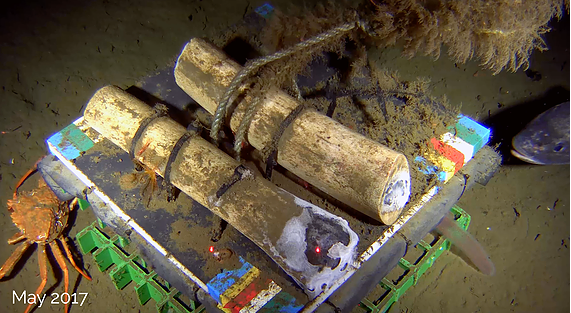SubC Stories: Whale Bone Study Continues in Barkley Canyon with Subsea Camera Observatory
Monitoring how benthic organisms utilize the sparse food resources available in deep-sea settings
Permanent presence on the seafloor allowing for long-term observation
Thanks to SubC Imaging’s Observatory System, researchers are able to establish large-scale patterns of biodiversity and ecosystem function
Led by Professor Craig Smith (University of Hawaii at Manoa), Professor Lisa Levin (Scripps Institution of Oceanography), and Dr. Fabio De Leo (Ocean Networks Canada), the University of Victoria have been using SubC’s Observatory Solution for their underwater study in Barkley Canyon since 2014.
In May 2014, three humpback whale (Megaptera novaeangliae) rib sections, one 20x20x10 block of Douglas Fir (Pseudotsunga meniziesi), and a ~ 30x30x30 block of authigenic carbonate were placed at a depth of 890m inside the Barkley Canyon -- a site at Ocean Networks Canada NEPTUNE subsea camera observatory. The purpose of this scientific experiment is to monitor the changes triggered by the implantation of various organic and inorganic substrates as well as monitor how benthic organisms utilize the sparse food resources available in deepsea settings.
Full Control of Deep-Sea Observations
**The footage shown in the Barkley Canyon timelapse video is from a newer generation of SubC smart cameras that the University of Victoria upgraded to partway through the project.
On a schedule of every two hours, the autonomous subsea cameras and LEDs panned to the three substrates and, while holding its position for one minute on each, captured five-minute videos.
"This is the first time we are able to control our observations in deep water by recording the experiments on a daily basis every two hours and turning on the lights at any time to make further observations." – Dr. Fabio De Leo
Cost Efficient, Long-Term Observation
Setting up a cabled ocean observatory created a permanent presence on the seafloor allowing for long-term observation. This also eliminated the need for costly, more time-consuming monitoring via multiple deployments of ROVs or AUVs in order to gather the data. With the help of the Observatory Solution, the researchers are able to establish large-scale patterns of biodiversity and ecosystem function in areas where there are whale bones.
References
Citation: De Leo, Fabio & Smith, Craig R. & Levin, Lisa & Fleury, Aharon (2016). Early benthic successional processes at implanted substrates in Barkley Submarine Canyon affected by a permanent oxygen minimum zone, American Geophysical Union 2016. Bibcode: 2016AGUOSME34B0796C
Biodiversity, connectivity and ecosystem function in organic-rich whale-bone and woodfall habitats in Barkley Canyon
https://www.oceannetworks.ca/whalebone-experiment-minimum-oxygen-zone
https://www.oceannetworks.ca/researcher-residence-craig-smith-whale-falls

